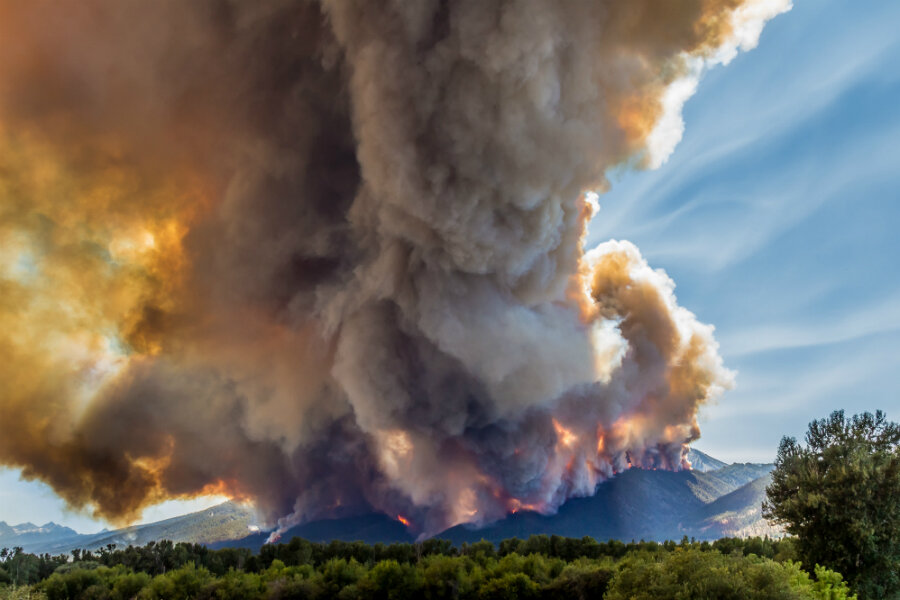Climate studies: Western wildfires have doubled, New York City flood risk will triple
Loading...
Expect more natural disasters as climate change goes unchecked, say scientists.
Already wildfires across the Western United States have increased ninefold during the past three decades, and climate scientists can now blame more than half of that increase on human-induced climate change, according to a study published Monday in the journal Proceedings of the National Academy of Sciences.
And that study coincides with another published in the same journal predicting more dramatic flooding with rising global temperatures. Researchers report in that paper that New York City will be three times more likely to experience another flood like the one that devastated the city following what was dubbed superstorm Sandy in 2012 over the next century. The authors of that study also credit human-induced global warming for the change.
"That climate change is becoming an increasingly important player in these types of events is not surprising at all," Arthur DeGaetano, director of the Northeast Regional Climate Center and a professor at Cornell University, who was not part of either study, writes in an email to The Christian Science Monitor. However, he says, both studies highlight that climate change is increasing the magnitude of events like wildfires and floods by changing the baseline conditions.
It's difficult to sort out the role of climate change, particularly when it comes to wildfires. So John Abatzoglou, an associate professor at the University of Idaho, and Park Williams of the Lamont-Doherty Earth Observatory at Columbia University used the same metrics used by firefighters, government agencies, and other organizations to calculate just how flammable an area is under certain conditions.
Inputting variables such as temperature, precipitation, humidity, and wind, the pair calculated how readily a region could burn, a metric called fuel aridity. Then, they used climate models to calculate what those variables would have been without global warming.
"We see these big increases in fuel aridity across the Western forests" from 1984 to 2015, Dr. Abatzoglou tells the Monitor in a phone interview. "But what we find is about half, only half, not all of it, but about half of it, is attributable to the human-caused climate change."
That means that other factors, like natural variability, have compounded with climate change to result in longer fire seasons, larger individual fires, and a ninefold increase in the area burnt over the past 30 years.
Another factor could be the amount of dry, unburned wood that has built up over decades of efforts to suppress wildfires, suggests Abatzoglou. So one solution going forward could be to allow controlled fires to burn off that tinder when conditions are wetter. "We do see a really strong coupling between climate change and forest fire in the Western United States," he says, but "I think there may be ways to weaken that relationship" – by minimizing fuel for these massive wildfires.
Flooding from storm surges might be more difficult to decouple from climate change, however.
When a storm rolls into a coastal area, its turbulence causes seas to rise up – in what is known as storm surge. The power of a storm and the baseline sea level are the main factors in how high that flood rises, study lead author Ning Lin, an assistant professor of Civil and Environmental Engineering at Princeton University, explains in a phone interview with the Monitor.
And the seas are rising.
"It's more complicated for the storms because there are a lot of competing factors going into the storm activity," Dr. Lin says, but some research suggests storms overall will be getting more intense.
With sea level rising globally, coastal cities are already starting to consider building berms or levees to block out massive storm surges. But perhaps the way houses are built could change too, Lin says. They could be built on stilts or people could be discouraged from building on the coast, shifting centers of development inland instead.
The 'new normal'?
Taken together, the two studies suggest a dismal future of fire and floods if climate change continues unchecked.
But Ken Kunkel, lead scientist for the Cooperative Institute for Climate and Satellites in North Carolina, suggests this doesn't necessarily extrapolate to all natural disasters.
"Anthropogenic climate change has its more direct effect on global temperature. In turn, our confidence in future changes in extreme events is highest where the extreme type is most directly related to temperature," he writes in an email to the Monitor. "Both of these studies are focused on physical situations closely tied to temperature," as wildfires burn best when summers are drier and higher global temperatures mean glacial ice melt filling the seas.
"However, there are other types of weather disasters that are not directly linked to temperature and there is more uncertainty about the future risk of those," Dr. Kunkel points out.
It's also difficult to pin individual disasters on climate change. For example, storms are short-term weather events, Lin says, while climate is about long-term trends.
Still, those trends don't bode well as the severity of natural disasters is an interplay of both. And, with human-induced climate change as a growing factor, it's not surprising the severity and frequency of events are increasing, says Cornell's Dr. DeGaetano.
"Climate change impacts are already threatening us here in the U.S. and around the world," Michael Mann, director of the Earth System Science Center at Pennsylvania State University, who was not part of either study writes in an email to the Monitor. And, he adds, these impacts "will only worsen if we do not act on climate."
Some have called these increased events the "new normal," but DeGaetano objects to that term. "It implies that they will become common occurrences," he says. But "these are still extreme events, climate change's effect is more like, for example, making a once-in-a-lifetime event a twice-in-a-lifetime occurrence."







